Description
Poroelastic Road Surfaces – State of The Art
Beata Świeczko-Żurek * – Luc Goubert ** – Jerzy Ejsmont * – Grzegorz Ronowski *
ABSTRACT: Poroelastic Road Surfaces (PERS) constitute a specific group of pavements containing a great amount of crumbled rubber. In most cases rubber aggregate constitutes about 20% of the mixture (by weight) and a polyurethane resin is used as a binder. As a result, PERS is characterized by a much higher elasticity than asphalt and a high porosity typical for drainage pavements. Due to this, tire/road noise is greatly reduced and on top of this, rubber aggregate that is obtained from scrapped car tires is utilized with advantage for the environment. The paper presents a historical outline of attempts to create poroelastic surfaces, discusses problems that have already been solved and problems that remain. The results of the PERSUADE project funded within 7th EU Framework Programme have also been discussed, where 6 small scale and 8 full scale test sections have been created, some of which were quickly destroyed while others performed well for a long period of time.
The basic problem with PERS is the relatively low durability of this pavement. This problem manifests itself both by debonding of the PERS surface from its base layer and by degrading of the PERS material by loosening of the aggregate (raveling). In the opinion of the authors of this paper, to improve the durability of PERS some changes in the method of joining this pavement to the under-layers should be developed. Improvement may be achieved by introducing an additional fiber-reinforced interface layer optimized on one side to bind to the asphalt pavement and on the opposite side to be joined to PERS.
So far the tested PERS pavements have shown unrivaled performance in terms of noise reduction for car tires. Compared to reference surfaces, noise reduction is up to 12 dB, making PERS surfaces the quietest pavement that exists. The rolling resistance of passenger car tires on PERS surfaces is similar to the existing asphalt and concrete pavements but unfortunately, on the higher side of it. Regrettably, the rolling resistance of the truck tires is significantly higher on PERS surfaces than on classic surfaces. An additional valuable feature of PERS pavements is its positive impact on safety in the event of a vehicle fire associated with spillage of fuel.
KEYWORDS: Poroelastic Road Surface, Tyre/Road Noise, Rolling Resistance

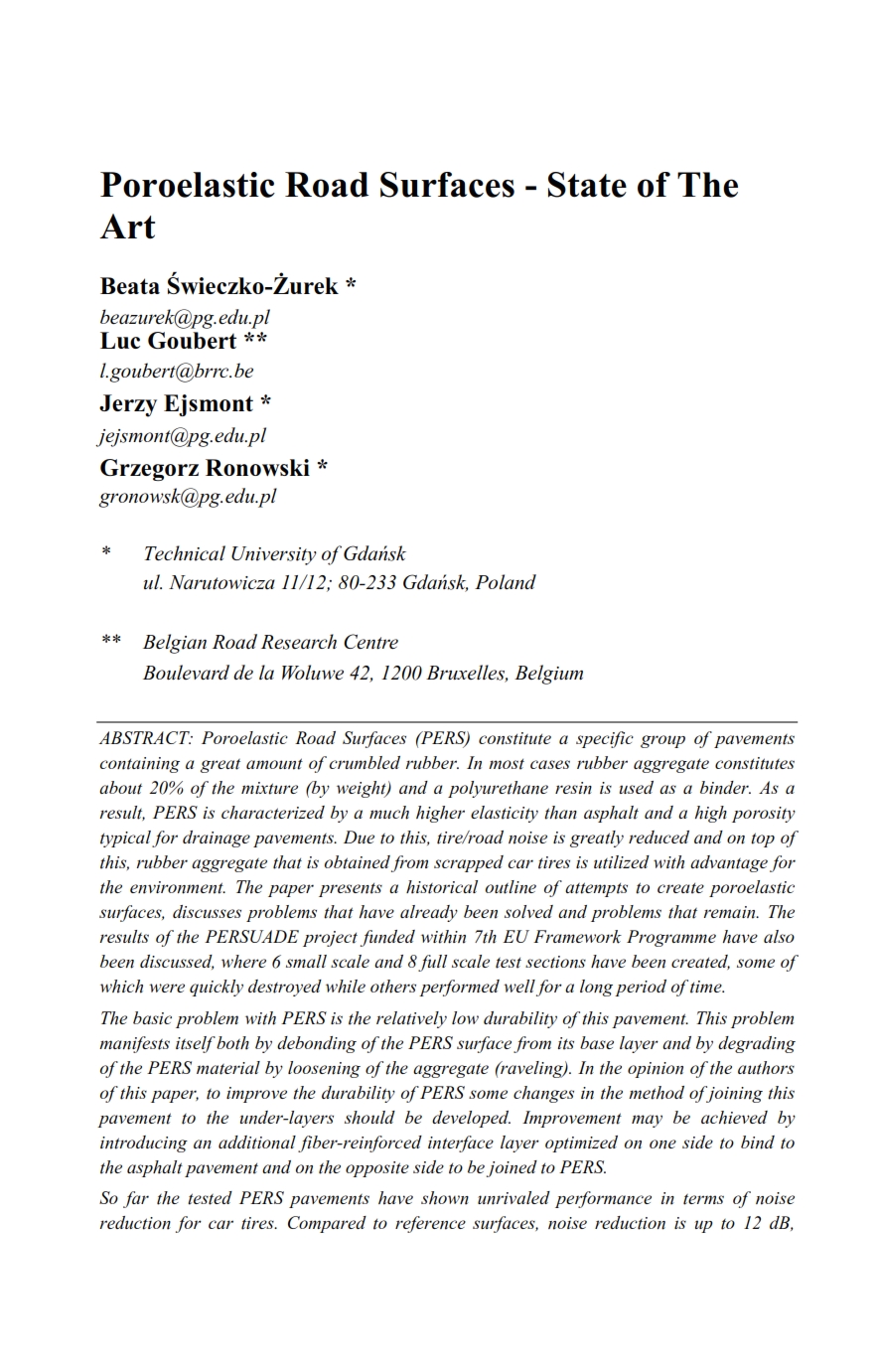
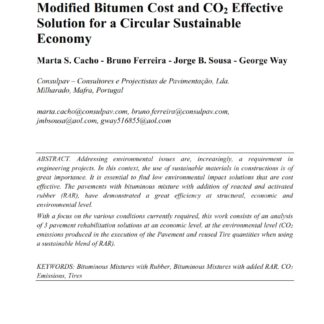
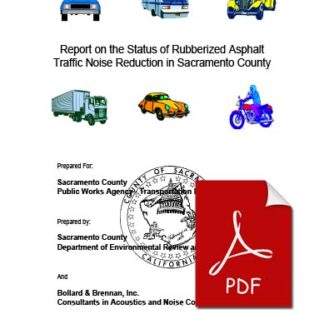
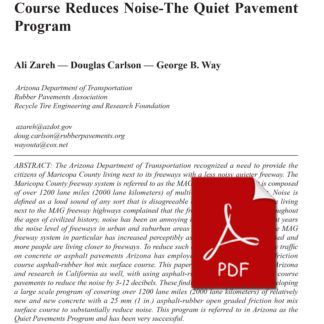


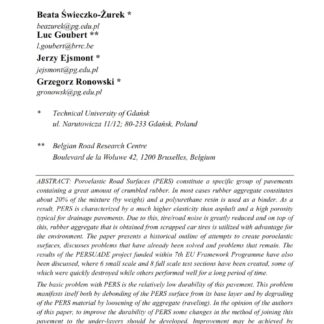
Reviews
There are no reviews yet.